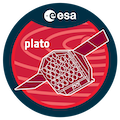Conveners
From Stars to Planets
- Thomas Wilson
- Ana Heras
PLATO’s top-level science goal is to discover and characterise a sample of small (terrestrial and sub-Netpune size) transiting planets orbiting in the habitable zone of bright stars, and to measure their radii, masses and ages with accuracies of 3, 10% and 10%, respectively. To achieve this goal requires an exquisite understanding of stellar variability signals, from magnetic cycles to spots,...
The AutoRegressive Planet Search (ARPS) methodology is a pipeline for the analysis of space-based transiting data. It performs maximum likelihood fitting of low-dimensional ARIMA models to remove stellar and instrumental variations brief transits are largely unaltered. A novel Transit Comb Filter periodogram is applied to ARIMA residuals. Tests with simulations and real data show ARIMA+TCF...
One of the biggest hurdle in the transit field has been the initial detection of planetary signals within light curves. While this difficulty is multifactorial, it mostly comes from the stellar activity of the host and the shallow nature of exoplanet transits. The stellar activity varies over a range of timescales, with effects both shorter and longer than the transits themselves. This makes...
The current catalog of more than 5000 confirmed exoplanets shows a great diversity of planetary systems: they differ greatly in their sizes, separations, masses, and stellar host characteristics. Transit surveys, including Kepler and TESS, unveiled a large population of small planets orbiting within 1 au of their host stars. By correcting for observational and survey biases, we can study the...
Characterizing Exoplanets Satellite (CHEOPS) is the first ESA space mission dedicated to the study of known exoplanets. The satellite, carrying a 30cm photometric telescope, carried out its 3.5-year nominal mission between December 2019 and September 2023 is currently in it’s first extended mission. CHEOPS is performing ultra-high precision photometry of exoplanetary systems with a sensitivity...
We present the detailed characterisation of TOI-837 b, a transiting exoplanet orbiting a 35 +/- 5 Myr star. Utilising an integrative approach combining TESS photometry, ground-based observations, and HARPS spectroscopy, this study presents the precise determination of TOI-837b's radius, mass, and (a relatively high) density. Given the precise age estimate of the system, we can estimate that...
Fitting planet formation models to exoplanet demographics necessitates to generate hundred of thousands of systems. Yet, modelling every planet formation processes (growth, migration), in a single simulation is still beyond our computational capabilities. The population synthesis approach aims at combining fast semi-analytical recipes modelling the important physical processes at play, to keep...
High resolution spectroscopy will play a key role in the ground based follow-up of PLATO targets. On the one hand, radial velocities will be fundamental for the measurement of planet masses, with ~10 cm/s precision needed to detect Earth analogs. On the other hand, transmission spectroscopy measurements will allow to characterise their atmospheres. These objectives remain, however, severely...

